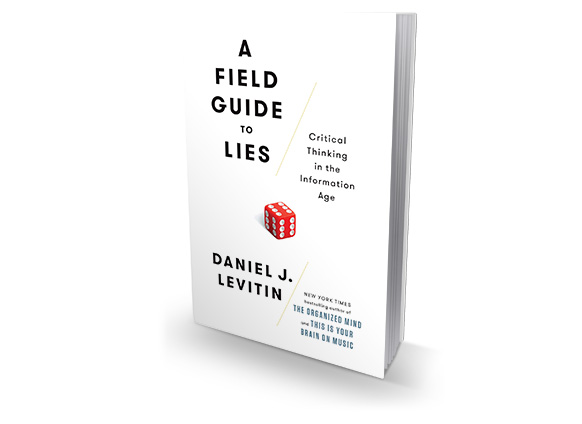When I was an undergraduate student studying to be a science teacher, one of my goals was to develop scientific literacy in my students. One of my journals from the time records. “I want my students to be able to use science to make decisions.” While I am not exactly sure what I meant by that, I know more recently I have become interested in transfer. “How do we teach in such a way that students can use what they learn in situations other than those in which they learned?”

Levitin, D. J. (2016). A field guide to lies: Critical thinking in the information age. Dutton.
From my continued interest in it, it may seem reasonable to conclude that I never really met my goal. It is, however, a more important goal than ever. Critical thinking—the ability to assess the information and arguments for logic, adequacy, reasonableness, and other factors related to their quality—has taken on increased importance as the Internet has made its way from university computer rooms to our desktops and now into our pockets. Daniel J. Levitin introduces his 2016 book A Field Guide to Lies: Critical Thinking in the Information Age with the observation, “Today, information is available nearly instantaneously, but it is becoming increasingly hard to tell what’s true, and what it not, to sift through the various claims we hear and to recognize when they contain misinformation, pseudo-facts, distortions, and outright lies” (p. ix).
The undergraduate me did not know what the future would hold and that critical thinking (which I called scientific literacy at the time)—if I could teach it—was going to be so necessary for my students as they became adults. My interest in this topic waned for much of my career, but as I think deeper learning and the fact that today’s students must be learners long after they leave our classrooms, I am returning to it.
Levitin divided his book into three parts: evaluating numbers, evaluating words, and evaluating the world. The section that I found most interesting and relevant was evaluating numbers. My career has included multiple stints as a mathematics teacher, as well as many years working with mathematics faculty (from primary grades through community college) to us technology in their teaching. My expertise is marginal in the field, but what has become clear to me is that the mathematics Levitin describes as necessary for critical thinking is not the mathematics most students study in high school. In A Field Guide to Lies, we read about statistics, probability, averages, graphing, and data collection; high school students continue to study a curriculum leading to calculus (at least in the schools with which I am most familiar).
It is true that many humans find it unnatural and difficult to deal with numbers It is also true that quantitative data is playing an increasing role in our lives. The work of educators (those who teach mathematics and those who teach other subjects) must accept the realities of human brain and the culture we have created and be prepared to develop their own critical thinking skills and those of their students. If I ever return to a mathematics classroom (which is unlikely since I left k-12 education for a number of personal and professional reasons), then A Field Guide to Lies will be in my classroom library. For now, it is on my shelf and will be taken down whenever my conversations with faculty turn to critical thinking.